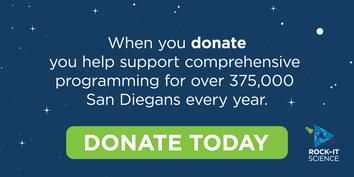Craveology Cafe and the North Star Science Store are temporarily closed for renovation.
Key Issues
Community Partnerships
Just as STEM education has embraced innovation at the program level, it must also embrace innovation at the infrastructure level. Community partners across sectors must do more than merely coordinate efforts. Stakeholders must work cohesively at a new, deeper level to provide more students with quality learning in and out of school. They must properly scale efforts to serve as many students as possible.
STEM Education
Proficiency in STEM—science, technology, engineering and math—is more important now than ever before. All careers, even those outside of STEM fields, require candidates to possess collaborative, critical thinking and problem-solving skills. These are exactly the kinds of skills that the STEM disciplines are especially good at teaching.
STEM education is about more than building a strong future workforce; it helps students gain resiliency, analytical skills, computational thinking and the knowledge they need to become capable, fulfilled adults in a technology-driven society. For a strong workforce, we need to foster these skills in all of our nation’s students.
Workforce Preparedness/Career Pathways
STEM careers boast low rates of unemployment and pay higher salaries than other fields. The average wage for STEM occupations is nearly double the average for all other occupations ($85,570 versus $47,230), according to the U.S. Department of Labor. The job market is changing. Most of today’s jobs require education beyond a high school diploma and a level of technical knowledge that students often don’t have access to in our nation’s classrooms.
Equity
Studies reveal most adolescents lack access to the resources and opportunities critical to fueling a lifelong interest in science. According to a national student survey conducted by the Amgen Foundation and Change the Equation, students want additional opportunities inside and outside the classroom that will inspire them to explore careers in scientific fields. Most students surveyed believe knowing an adult in their field of interest would be helpful, but only 32 percent actually know an adult in a STEM-based career.
Lack of access—and lack of role models in STEM—is particularly an issue for low-income students. The same study found low-income teenagers are less likely than peers to be involved in STEM-related extracurricular activities, to have awareness of such activities or to have access to career-planning resources.
Furthermore, women make up half of the total U.S. college-educated workforce, but just 29 percent of the science and engineering workforce. Without their input, we are missing out on half of the world’s innovative and creative minds.
The San Diego STEM Ecosystem is reimagining how community partners can coordinate efforts and align resources to provide quality STEM education for more students. When we surround San Diego residents with STEM-rich learning environments, our region, individuals and businesses can reach their full potential.
